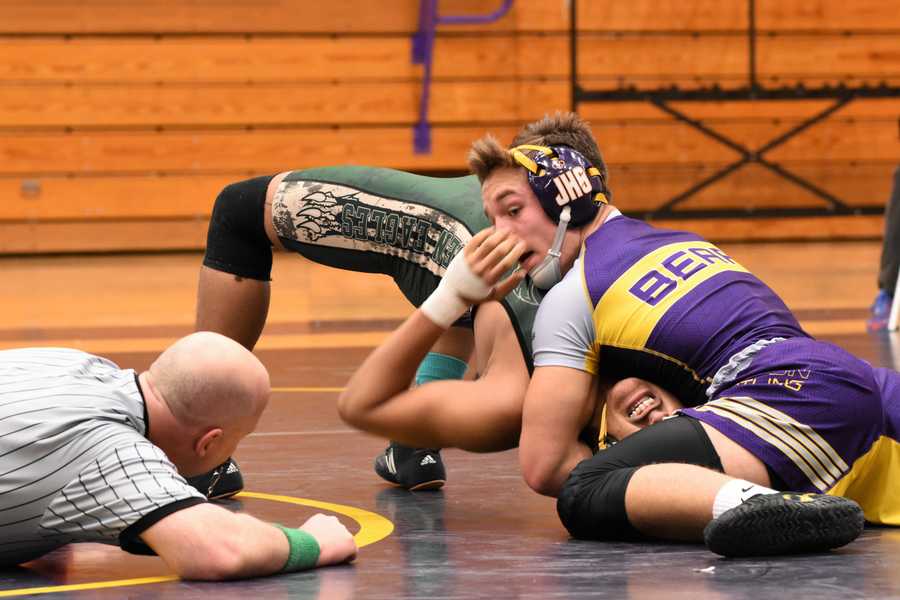Every year during the month of December, Buddy highlights the Twelve Days of Fearlessness. Whether it is getting up the nerve to lace up your old ice skates with your five-year-old or conquering a halfpipe like your teenage days, fearlessness is not just situational for all- for some, it is a way of life.

If we haven’t been there ourselves, we’ve definitely seen it in action. Months of sweat, work and planning all rendered to dust in an instant. A fall, a mistimed step, an over-extension- all followed by that familiar feeling of terror. The fear isn’t (usually) of the coming physical pain, but of the amount of time it’ll set you back. Injuries suck. They’re costly in just about every sense of the word. For athletes, some form of injury is inevitable, but there are things you can do to make them a bit less painful.
Skip the denial.
For starters, stop lying to yourself and go get it checked out. Injuries are emotionally hard to deal with. The desire to compete, and the sacrifice you’ve already put in make acknowledging the fact that you'll be out for a while hard to accept. I broke my collarbone playing middle school football. Too stubborn to admit to myself that I was hurt, I kept playing until I couldn’t bare the pain any longer. With my left shoulder hanging several inches below the other, I told myself, "it's just a muscle thing." I refused to see a doctor for three days before my mom forced me to go. That denial only made things worse stalling the healing process and delaying proper treatment.
My fear of going to a doctor was two-fold. First, acknowledging the break would hurt financially (I didn’t have health insurance growing up). Second, a broken bone meant I couldn't play sports (a middle schooler's nightmare). Thankfully, I have health insurance as an adult, and now, Buddy’s on-demand accident insurance can help cover the costs of an injury. With the first fear out of the way, the second fear can’t be dealt with through denial. Getting treatment as soon as possible is the only way to hasten recovery. If I had stopped playing at the first sign of injury, and sought treatment that same night, I probably would have recovered much sooner.
If you get injured, don’t wait, get an expert opinion. Even small sprains can lead to bigger problems down the road, so be grown, accept that you’re not invincible, and check in with a doctor or trainer.

During my senior year of high school wrestling, I tore a ligament in my ankle while wrestling a teammate 60lbs heavier than me. I was not going to give up my senior year of wrestling, and of course I thought to myself, “the team needs me.” So I kept my injury quiet, got an x-ray to make sure nothing was broken, and simply never showed up to the follow up specialist appointments for fear they would not allow me to wrestle. I put on a thick ankle brace, popped naproxen pills daily and pretended like everything was fine.
That decision got me through the season, but caused a lot of pain in the future. The untreated healing affected my gait, which according to my doctor, likely contributed to the sciatica I experienced in my early 20s. So, take it from the guy who did the exact opposite: go see a doctor, and follow through with their full recommendations.
Unless your friend is a doctor, don’t take their advice.
No offense to your friend of course. But the truth is, no matter how well-meaning, bad advice is just that— bad advice. So while your friends will surely offer their advice and experiences, don’t trust it in lieu of getting a professional. Sure, they can apply first-aid, recommend the RICE method, and that’s all good and fine. They can even tell you about how they dealt with the exact same injury, and you SHOULD listen to their stories. They can be helpful in how you mentally and emotionally cope with the injury.
But please, don’t forgo the recommendations of actual doctors, athletic trainers, and physical therapists because of what your friend told you. They're pros for a reason, and you should trust them.
Do your physical therapy.
Um..need I say more? If you were prescribed physical therapy, do it. Do it faithfully, all the way and be honest with your physical therapist (PT). Physical therapy will help you heal that much faster, while also increasing flexibility and mobility to prevent future injury. If you really plan on “bouncing back,” you should definitely do your recommended physical therapy.
Sometimes that means doing exercises with your PT at the clinic, other times your PT will give you exercises to do at home. Regardless of which, do your therapy exercises with fidelity. Get your partner or a friend to hold you accountable if you need. Physical therapy is critical for proper recovery and preventing re-injury. If I had done physical therapy for my ankle, I may have prevented a ton of issues.
Stay positive.
This one may sound a bit kitschy, sure, but it’s important. Many folks feel down during their recovery periods, particularly if the injury limits their ability to walk around and go about their daily tasks. Do everything you can to stay positive and focused on your recovery. Set small daily goals for yourself. Keep a log and track your progress. It will help to reflect on new accomplishments and gain the satisfaction that even though you’ve had a setback, you can still keep moving forward. As Rocky says, “it’s not about how hard you can hit, it’s about how hard you can get hit and keep moving forward.”

Keep training.
Yup, you read that right. Just because you’ve had an injury doesn’t mean you can’t keep training. Of course, you can’t train your injured body part in the same way, but you can work on so many other things to keep you primed for when you’re cleared for activity. If you’ve injured a knee, train mostly upper body. Battle ropes for cardio, work on flexibility and mobility everywhere else. There are hundreds, if not thousands, of ways to train yourself while injured.
If you’re not sure what you can do, ask your doctor or PT. They’ll likely give you exercises that actually involve the injured part to some degree. By never actually taking a break from training, and maintaining a schedule, bouncing back will be much easier. Look at this as an opportunity to train the accessory muscles and movements that have been lagging.
Set micro-goals.
I alluded to his earlier, but setting micro-goals is a powerful way to stay motivated and keep working through setbacks. If something happens and your larger goal doesn’t pan out, find a new goal (or new series of goals) that’s still reachable to keep pushing towards. The beauty of micro-goals is that they’re infinitely scalable. If there’s a setback in the larger goal, you can scale back and set new benchmarks to keep pushing towards.
While you train during recovery and post-recovery, it’s important to not get bogged down with whatever your numbers were pre-injury. The point now is to keep improving. Forget about getting “back to where you were” and focus more on improving each day. Some injuries are serious enough to mean you’ll never quite get back to the same level, while others are more manageable. With a goal set on constant improvement, and not just on “getting back,” you can keep working on progress and not dwell on the past. Micro-goals will help you improve, even beyond where you were. Keep working, and soon you’ll not only have your confidence back, but the numbers too.

Not all injuries are preventable, but there’s a lot you can do to prevent many injuries. Listen to your body. Even after you’ve been cleared, re-injury is still a big possibility, so take warm-ups, cool-downs, and supplemental exercises seriously. Even with all the prevention, an injury may still occur. By following doctor recommendations, training, micro-goals and by keeping a positive attitude, you can bounce back from an injury and get back to doing what you love.
This post was originally written by Cezar Carvalhaes for the Cerus Fitness blog.


